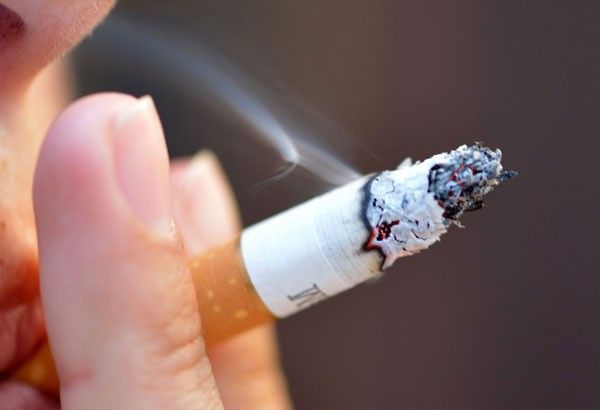Hike in excise tax cuts number of Pinoy smokers

MANILA, Philippines - Around eight million Filipinos have stopped smoking as cigarette supply has gone down by more than a quarter as a result of a landmark law in 2012 raising excise taxes on cigarettes.
The smoking prevalence rate – the ratio of smokers vis-à-vis population – dropped to 23 percent last year from 31 percent four years ago or before Republic Act 10351 was enacted, government data showed.
With an estimated 100 million Filipinos, the latest prevalent rate translated to eight million people who have quit smoking, said Antonio Miguel Dans, president of the Philippine Society of General Internal Medicine.
“We have gone a long way, but more needs to be done,” Dans said at a forum in Pasig City yesterday.
“We estimate around two million more to stop once the unilateral bracket takes effect next year,” he said in a separate interview.
From 2012 to 2015, the volume of tobacco supply in the market dropped by an average of 25.9 percent. The biggest drop was at 19.4 percent in 2014 from the previous year’s figure. Supply from 2012 to 2013 dropped 15.5 percent.
Supply last year was 9.1 percent higher than the previous year, however.
“This is due to the industry’s usual practice of front loading in anticipation of the 2016 increase in rates,” said Johanna Hortine of the DOF’s fiscal policy and planning group.
Another reason for the drop in the number of smokers was the “implementation of the Graphic Health Warnings Law and the provision of RA 8424 requiring manufacturers to affix excise tax stamps on tobacco products,” Hortine said.
Under RA 10351, excise levies for tobacco and alcohol have been raised. The law also requires reducing to just one the tax bracket for cigarette products by 2017 from the current four.
Having more brackets means taxes differ depending on the type of tobacco used for producing cigarettes. Starting next year, rates would be increased four percent every year.
Dans said there is still much work to do as even as the country has “one of the lowest prices of tobacco in the world.”
The DOF is including a new adjustment in sin taxes under its comprehensive tax reform program, but it wants the current law to fully take effect by 2017.
“The sin tax reform law helped us reach a record-high in revenue collections last year,” Hortine said.
The law has also reduced the supply of alcohol products, although its impact on drinking prevalence has yet to be established.
According to DOF data, volume of fermented liquors dropped 11.2 percent in 2013. The decrease slowed down to 0.98 percent and 1.4 percent in 2014 and 2015, respectively.
For distilled spirits, declines of 12.1 percent in 2014 and 4.2 percent last year were recorded, data showed.
“The legislators were really the ones who made this happen. They were able to save more lives by proper legislation,” Dans said.
- Latest
- Trending































